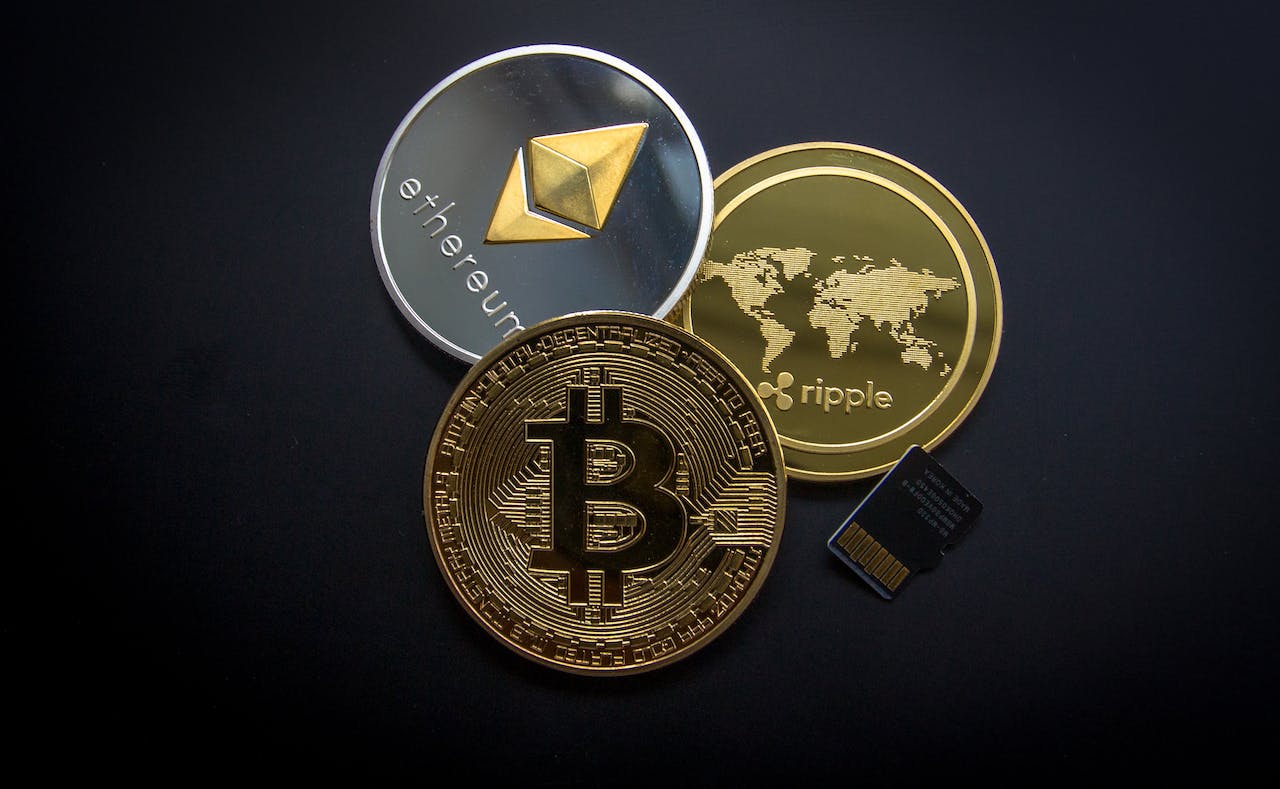
Decentralized Finance (DeFi): Revolutionizing the Banking Industry
Introduction to Decentralized Finance (DeFi)
Decentralized Finance, commonly known as DeFi, is a radical reimagining of the traditional financial system. It leverages blockchain technology, particularly Ethereum, to remove intermediaries from financial transactions. This shift towards decentralization offers the promise of a more accessible, efficient, and fair financial system.
DeFi encompasses a broad range of financial applications, all built on decentralized networks and open-source software. From stablecoins and exchanges, to lending and insurance platforms, DeFi applications aim to recreate and improve upon the existing financial system.
The core principle of DeFi is interoperability – the ability for one application to seamlessly integrate with another. This is made possible by the shared infrastructure of the Ethereum blockchain. Each DeFi application can potentially function as a building block for others, leading to an innovative and highly flexible financial ecosystem.
In essence, DeFi is about democratizing finance. By making financial transactions more transparent, secure, and accessible, DeFi has the potential to create a truly open financial system. This introduction is just the tip of the iceberg, as the world of DeFi is vast and rapidly evolving. The following sections will delve deeper into this fascinating topic.
The Traditional Banking System: A Brief Overview
The traditional banking system has been the backbone of global finance for centuries. It is a network of financial institutions – primarily banks – that provide a wide range of services including deposit accounts, lending, payment processing, and investment services.
At the heart of this system are banks, which act as intermediaries between savers who deposit money and borrowers who need loans. Banks make a profit from the interest difference between what they charge borrowers and what they pay to savers.
One of the key features of the traditional banking system is the centralization of control. Central banks, such as the Federal Reserve in the U.S. or the European Central Bank in the Eurozone, oversee and regulate the operations of other banks within their jurisdiction. They have the power to set interest rates and control the money supply to manage economic growth and stability.
While the traditional banking system has facilitated economic growth and prosperity, it is not without its flaws. The following sections will discuss some of these challenges and how DeFi proposes to address them.

Challenges in the Current Banking System
Despite its pivotal role in the global economy, the traditional banking system faces several challenges:
- Access and Inclusion: According to the World Bank, around 1.7 billion adults worldwide are unbanked, meaning they lack access to basic financial services. This is a significant barrier to economic participation and growth.
- Efficiency and Speed: Traditional banking transactions, especially cross-border ones, can be slow due to the need for various intermediaries. This can lead to delays and inefficiencies.
- Transparency: The traditional banking system often lacks transparency. It can be difficult for customers to understand how their money is being used and what fees they are being charged.
- Centralization Risks: Centralization in the banking system can lead to systemic risks. If a major bank fails, it can have a domino effect on the entire financial system.
- Interest Rates: Savers often earn minimal interest on their deposits, while borrowers can face high interest rates. This interest rate disparity can discourage saving and lead to unsustainable debt levels.
- Innovation: The traditional banking system has been slow to innovate and adapt to new technologies, which can limit its ability to meet changing customer needs.
These challenges highlight the need for a new approach to finance. The next section will discuss how Decentralized Finance (DeFi) addresses these challenges.

How DeFi Addresses These Challenges
Decentralized Finance (DeFi) offers innovative solutions to the challenges faced by the traditional banking system:
- Access and Inclusion: DeFi operates on a global scale, accessible to anyone with an internet connection. It has the potential to bring financial services to the unbanked and underbanked populations, promoting financial inclusion.
- Efficiency and Speed: DeFi transactions occur on the blockchain, which can process transactions faster than traditional banking systems. This is especially true for cross-border transactions, which can be completed in minutes rather than days.
- Transparency: All transactions on the blockchain are transparent and can be audited by anyone. This level of transparency is unprecedented in the financial world and can help to build trust among users.
- Centralization Risks: DeFi is decentralized, meaning it doesn’t rely on a central authority. This reduces the systemic risk associated with the failure of a single entity.
- Interest Rates: DeFi platforms often offer more competitive interest rates than traditional banks. This is possible because DeFi platforms operate with minimal overhead costs.
- Innovation: DeFi is at the forefront of financial innovation. Built on flexible blockchain technology, DeFi applications can quickly adapt to meet changing user needs and market conditions.
By addressing these challenges, DeFi has the potential to revolutionize the banking industry. The next sections will provide case studies of successful DeFi applications and discuss the potential impact of DeFi on the future of banking.
Case Studies: Successful DeFi Applications
Decentralized Finance (DeFi) has seen a surge in popularity and adoption, with numerous successful applications demonstrating its potential. Here are some notable examples:
1. Aave
Aave is a decentralized lending system that allows users to lend, borrow and earn interest on crypto assets, all without the need for a financial intermediary. It has gained popularity due to its unique features like flash loans, which are uncollateralized loans that must be repaid within the same transaction.
2. Uniswap
Uniswap is a decentralized exchange protocol built on Ethereum. It uses an automated liquidity protocol, which means there are no order books and anyone can trade directly with the smart contract. This mechanism ensures more efficiency and lower fees.
3. MakerDAO
MakerDAO is a decentralized credit platform on Ethereum that supports Dai, a stablecoin whose value is pegged to USD. Users can open a collateralized debt position (CDP), lock in collateral assets, and generate Dai as debt against this collateral.
4. Compound
Compound is a decentralized, blockchain-based protocol that allows you to lend and borrow cryptocurrencies. Lenders earn interest on the cryptocurrency they supply to the protocol and borrowers pay interest to borrow it.
5. SushiSwap
SushiSwap is a decentralized exchange (DEX) that uses a model similar to Uniswap. However, it differentiates itself by providing a community-oriented governance model and a token rewards system.
6. Synthetix
Synthetix is a decentralized platform on Ethereum for the creation of Synths: on-chain synthetic assets that track the value of real-world assets. It allows for the creation of a variety of synthetic assets including fiat currencies, cryptocurrencies, commodities, and inverse indexes.
7. Alpha Homora
Alpha Homora is a protocol for leveraging your position in yield farming pools. It allows users to borrow assets at attractive interest rates to maximize their yield farming returns.
These applications are just a few examples of how DeFi is revolutionizing the financial industry. Each offers unique features that provide value to their users and demonstrate the potential of DeFi.
The Future of Banking: DeFi’s Potential Impact
Decentralized Finance (DeFi) is poised to have a transformative impact on the banking industry. Here are some potential changes we might see in the future:
1. Democratization of Finance
DeFi has the potential to democratize finance by providing open access to financial services. With DeFi, anyone with an internet connection can access financial services, regardless of their location. This could be particularly impactful in developing countries where access to traditional banking services is limited.
2. Increased Financial Efficiency
By eliminating intermediaries, DeFi could lead to more efficient financial markets. Transactions can be executed faster and at a lower cost, which could benefit both consumers and businesses.
3. Innovation in Financial Products
DeFi could lead to innovation in financial products and services. We’ve already seen this with the creation of flash loans and yield farming, and it’s likely that we’ll see even more innovation as the sector matures.
4. Greater Financial Transparency
The transparency of blockchain technology could lead to greater accountability and less corruption in the financial sector. All transactions are recorded on the blockchain, making it difficult for malicious actors to manipulate the system.
5. Challenges and Risks
While DeFi has significant potential, it also comes with risks. These include smart contract vulnerabilities, volatile crypto asset prices, and regulatory uncertainty. However, these challenges are not insurmountable and ongoing advancements in the sector are continually mitigating these risks.
In conclusion, while it’s still early days for DeFi, it has the potential to revolutionize the banking industry. By democratizing access to financial services, increasing efficiency, and fostering innovation, DeFi could redefine our understanding of what is possible in the financial world.








